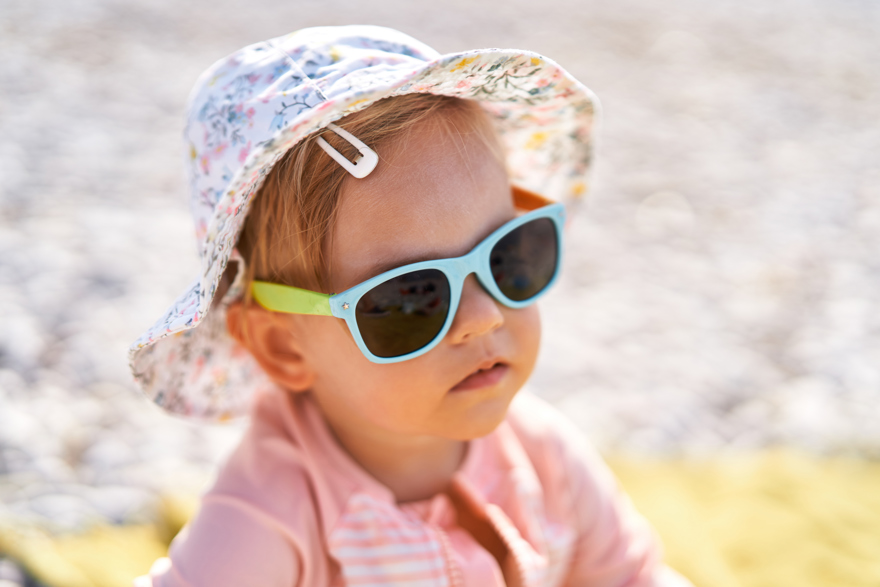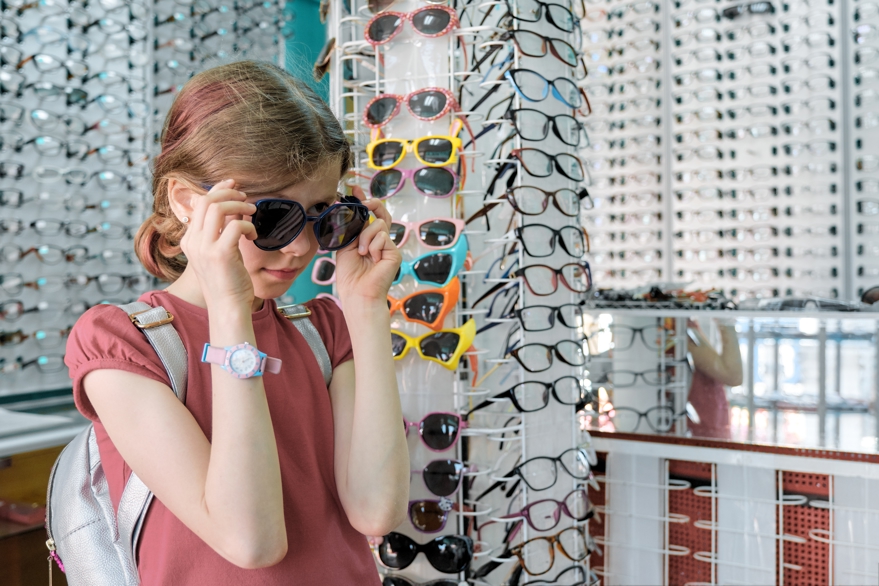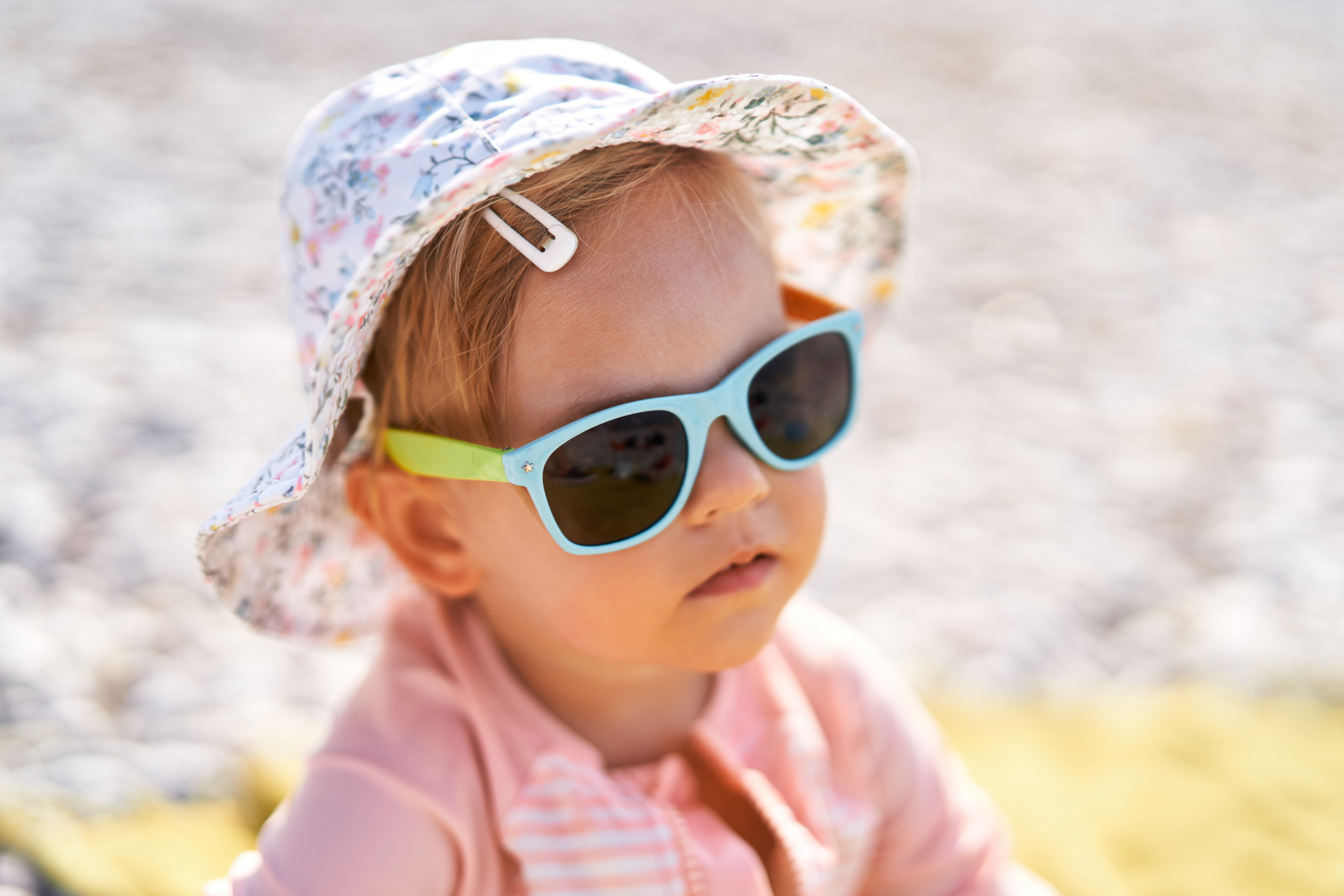Did you know that over 25,000 children aged 0 to 16 in the UK face vision problems?
Did you also know that melanoma - the most serious type of skin cancer - is one of the most common cancers for young adults between 15 and 29 years old?
Alarming statistics like these highlight the urgent need to protect our children's eyes (and skin) from the sun. As parents and caregivers, wearing sunglasses or using sun-protective clothing may not be enough to shield your child from the sun.
It's our responsibility to understand the significance of UV protection and provide the right tools and care to protect our little ones from the harsh effects of excessive sun exposure.
In this article, we will take a deeper look into the importance of sun protection, what protects eyes against sun exposure, if UV rays are bad for kids, whether glasses and sunglasses block these harmful rays and what type of UV protection should kids sunglasses have - among other helpful tips.
Understanding UV Rays

Ultraviolet (UV) rays, an element of sunlight, carry both benefits and dangers. They are not visible to the human eye but play a significant role in our lives.
They are classed into three main types:
-
UVA
-
UVB
-
UVC
UVC rays have the shortest wavelength and are mainly absorbed by the Earth's atmosphere.
However, UVA and UVB rays do impact our health and eyesight. While they are essential for vitamin D synthesis - which slows down the ageing process - and can uplift our moods, too much exposure can lead to serious eye problems.
Research shows that prolonged exposure to UV rays can cause:
But what's the difference between UVA and UVB rays?
UVA
-
UVA rays have longer wavelengths and are less energetic than UVB rays.
-
They can penetrate the deeper layers of the skin and eyes, reaching the retina.
-
UVA rays are associated with skin ageing and cell damage and add to the premature development of eye conditions such as cataracts and macular degeneration.
-
These rays are present throughout the day, even on cloudy or overcast days.
UVB
-
These rays have shorter wavelengths and are more energetic than UVA rays.
-
They mainly affect the outer layer of the skin and cornea of the eyes.
-
UVB rays are responsible for sunburn and increased risks of skin cancer.
-
They play a role in vitamin D synthesis, which is important for bone health and immunity.
-
These rays are stronger at midday and during the summer months.
How can UV rays damage the eyes and are UV rays bad for kids?

UV light has the potential to cause serious harm to eyes of all ages, but children's eyes are particularly vulnerable. Since their eyes are still developing, more light penetrates the retina. Plus, kids usually spend a lot more time outdoors which intensifies their exposure to these harmful sun rays.
Let's take a closer look at a few eye-damaging conditions:
-
Photokeratitis: Also known as corneal sunburn, our eyes can experience sunburn in a similar way to how our skin would. Photokeratitis happens when the cornea - the clear frontal surface of the eye - is exposed to intense UV radiation. It can lead to symptoms like redness, tearing and sensitivity to light. While the pain is temporary, prolonged 'eye sunburn' can have serious long-term effects.
-
Ageing of the eyes: Prolonged exposure to UV rays can speed up the ageing process, such as cataracts (when the eyes become 'cloudy').
-
Increased risk of eye cancer: Excessive UV ray exposure can trigger mutations in the DNA of eye cells, leading to abnormal cell and tumour growth.
-
Higher risk of photophobia: Photophobia is when eyes become highly sensitive to light (including sunlight). Too much UV exposure can increase the development of this eye condition.
What Protects Eyes Against UV Rays?
Protecting our children's eyes from the sun is important in maintaining good eye health throughout their lives (and such is the same for our own adult eyes). Together with our body's natural defence mechanisms - which we'll explain in a minute - and preventative efforts, we can shield our eyes from the damaging effects of harmful UV ray exposure.
Natural defence mechanisms
Our bodies are marvellous organisms that have 'built-in' defence forces against the sun's rays, such as:
-
Eyelids: The skin of our eyelids acts as a mild protection barrier against UV rays.
-
Conjunctiva: This thin, transparent layer covers the white part of the eye and helps shield the underlying structures of the eye from UV exposure.
-
Pupil constriction: When exposed to bright light, our pupils naturally constrict (become smaller). This action limits the amount of light entering the eye.
-
Cornea and lens: The cornea and lens of the eye provide some level of protection by absorbing a portion of UV rays. However, it's not enough to block out all harmful sun rays.
-
Tears and blinking: Tears help moisten the cornea and blinking helps to evenly distribute tears across the eyes.
-
Melanin: This is the pigment responsible for our skin, hair and eye colour and provides some natural protection against the sun's harmful rays. Individuals with darker skin tones tend to have more melanin in their eyes, which can offer some level of UV defence. While those with fair skin (i.e. less melanin) are at higher risk of UV-related eye conditions and skin cancer.
Preventative measures: Sun-safe habits
-
Sunglasses: Wearing a good pair of sunglasses is one of the most effective ways to protect your children's eyes from the sun. These sunglasses typically come with polarised lenses that block out both UVA and UVB rays.
-
Wide-brimmed hats: Wearing a wide-brimmed hat provides extra shade to the eyes and surrounding areas, reducing the amount of UV damage.
-
Cover up: Opt for sun-protective clothing for your children when outdoors.
-
Shade: When your kids are playing outdoors, look for shady spots - such as umbrellas or under trees. This will minimise direct sun exposure to the eyes and prevent sun damage.
-
Sunscreen: Apply a broad-spectrum sunscreen (SPF 50) to the skin around the eyes to prevent sun damage to these delicate areas.
-
Staying indoors: Where possible, allow children to have 'sun breaks' by getting them to stay indoors. This could be specifically helpful during midday and the hot summer months.
-
Teach sun safety: Beyond wearing sunglasses, educating your child about sun damage and preventative measures (even on cloudy days) is important. Teach kids to seek shade, apply sunscreen, wear sunglasses and wear sun-protective clothing to instil a safer approach to sun exposure. This includes teaching them to not look directly into the sun!
Choosing The Right Sunglasses For Kids

When it comes to buying sunglasses to protect our children against UV rays, there are a few things to remember:
-
UV protection: Prioritise sunglasses that have an ultraviolet protection factor of 100% UV or UV400 protection. These lenses are specifically designed to block both UVA and UVB rays.
-
Quality lenses: For maximum protection, opt for sunglasses with high-quality polarised lenses. If your child usually wears prescription glasses, make sure that their sunglasses have the same lenses as their prescription lenses and extra protection against UV rays.
-
Fit and comfort: Ensure frames sit comfortably on your child's nose and ears without slipping down or pinching.
-
Durability and safety: Opt for sunglasses/lenses made from durable materials, such as polycarbonate lenses that are lightweight yet strong. These materials are scratch-proof and impact-resistant, which can withstand the active lifestyle of kids and reduce the risk of breaking.
-
Encourage kids: While prioritising sun safety and UV protection, allow your children to choose sunglasses they like. This will include them in the selection process and encourage consistent use when outdoors.
Do glasses block UV rays?
Sort-of. While regular glasses offer some level of sun protection, they do not have enough protection to fully shield eyes from harmful UV radiation. Regular glasses offer some level of UVB protection but allow most UVA rays to pass through.
Instead, choose sunglasses (with the same prescription lenses as your prescription glasses) that have UV-blocking properties, such as polarised lenses, for the best protection from the damaging effects of the sun.
Can my toddler wear sunglasses?
Absolutely! Toddlers can and should wear sunglasses. In fact, a toddler's developing eyes are more sensitive to light, making proper UV protection even more important.
What UV protection should kids' sunglasses have?
As mentioned, choose sunglasses that have an ultraviolet protection factor such as 100% UV protection or UV400 protection. These factors will ensure that both UVA and UVB rays are effectively blocked, reducing the risk of eye damage and related conditions.








